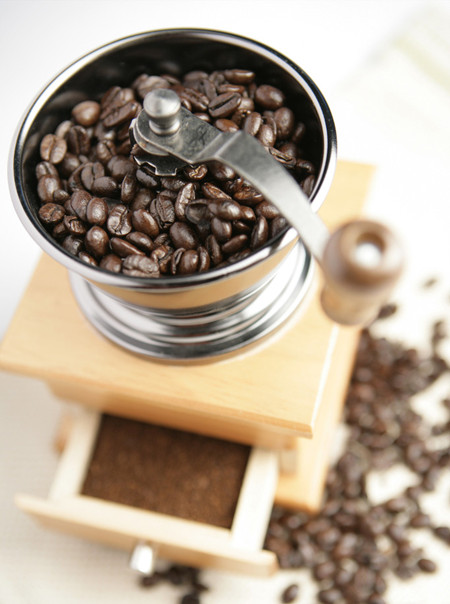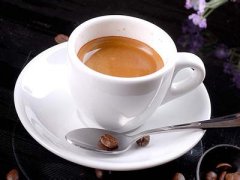Have basic knowledge about the various ingredients of coffee

Caffeine: caffeine is the most eye-catching of all the ingredients in coffee. It belongs to a kind of phytoxanthine (animal muscle component). It has the same properties as theophylline contained in cocoa, green tea contains the same theophylline, and the percentage of reduction after baking is very small. Caffeine has a very extensive effect. It will affect various parts of the human brain, heart, blood vessels, gastrointestinal tract, muscles and kidneys. The right amount of caffeine will stimulate the cerebral cortex, promote sensory judgment, memory and emotional activity, and make the myocardial machine more active. Vasodilation enhances blood circulation and improves metabolic function. Caffeine can also reduce muscle fatigue and promote digestive juice secretion. In addition to this, because it also promotes the kidney function to help the body expel excess sodium ions (chemicals that hinder the metabolism of water molecules), caffeine will not accumulate in the body like other narcotic and excitant substances (narcotic drugs, paint solvents, stimulants, etc.) and will be excreted in about two hours. The biggest bitterness of ─ in coffee flavor is caused by caffeine.
Tannin: after extraction, tannin will become a yellowish powder, which can easily blend into water. After boiling, it will decompose and produce pyrosylic acid, which will make the coffee taste worse. And if you soak it well and put it for several hours, the color of the coffee will become stronger than when it was just soaked, and it is not tasty enough, so there is the saying that "it is best to drink it as soon as possible."
Fat: the fat contained in coffee plays a very important role in flavor. After analysis, it is found that there are many kinds of fat in coffee, the most important of which are acidic fat and volatile fat. Acidic fat refers to the acid in fat and its strength varies according to the type of coffee, and volatile fat is the main source of coffee aroma. Once the fat contained in roasted coffee beans comes into contact with the air, chemical changes may occur and the taste and flavor will become worse.
Protein: the main source of calorie is protein, and like dripping coffee, most of the protein will not dissolve out, so no matter how much coffee you drink, the nutrition you get is limited, which is why coffee will become a sacred food for dieters.
Sugar: without sugar, you will not only feel the bitterness of caffeine and the sour taste of tannin, but also feel sweet, which is caused by the sugar contained in the coffee itself. After baking, most of the sugar will be converted to caramel, bringing a unique brown to the coffee.
Minerals: there are lime, iron, sulfur, sodium carbonate, phosphorus, chlorine, silicon and so on, because the proportion of very little affect the flavor of coffee is not big, combined to bring only a little astringent taste.
Crude fiber: raw bean fiber will be carbonized after baking, this carbon and sugar caramelization combine with each other to form the tone of coffee, but the fiber turned into powder will have a considerable impact on the flavor of coffee. Therefore, we do not encourage the purchase of powdered coffee beans, because we are unable to taste the flavor of the coffee.
The bitterness of coffee: the color, aroma, and taste of coffee are caused by complex chemical changes that take place during roasting. Therefore, raw beans must go through appropriate chemical procedures to achieve the most balanced state of its essential ingredients in order to be regarded as the best baked beans. The aroma of coffee changes with the heat, so the baking time should be shortened as much as possible, and the heat should be controlled at the lowest temperature that can produce effective chemical composition of coffee beans, that is, the time and heat of the shortest process, so that coffee beans can produce the most suitable composition ratio.
Aroma: aroma is the life of coffee quality, and it can best represent the coffee production process and baking technology, as well as the climate, elevation, variety, refined treatment, harvest, storage, roasting technology of the consuming country, etc. are the conditions that determine the aroma of coffee beans. The aroma of coffee was confirmed by gas chromatography to be composed of acid, alcohol, acetaldehyde, ketone, ester, sulfur compound, phenol, nitrogen compound and nearly hundreds of volatile components. Generally speaking, fat, albumen and sugars are important sources of aroma, while lipids blend with the sour and bitter of coffee to form a smooth flavor. Therefore, the disappearance of fragrance means that the quality is getting worse, and the relationship between aroma and quality is very close.
Important Notice :
前街咖啡 FrontStreet Coffee has moved to new addredd:
FrontStreet Coffee Address: 315,Donghua East Road,GuangZhou
Tel:020 38364473
- Prev

Blue Hawaii, the only coffee field in the United States.
There are a total of 132 islands in the Hawaiian Islands, of which eight are currently inhabited, all of which are basically made up of ocean islands and volcanic islands. Without volcanoes, there would be no Hawaii today. However, there are only two active volcanoes in the Hawaiian islands today, and they continue to contribute to the development of Hawaii. Of the 50 states in the United States, Hawaii serves as
- Next

Top Vodka Van Gogh launches new espresso flavors
High vodka has a new espresso flavor. In addition to preserving Van Gogh's pure Dutch Royal Distillation pedigree, it boldly launched a new black coffee-flavored vodka. Extract 100% natural mellow essence of Colombian coffee beans and inject pure, sweet, high-quality vodka, so that coffee and vodka in the perfect fusion burst out of great passion.
Related
- Beginners will see the "Coffee pull flower" guide!
- What is the difference between ice blog purified milk and ordinary milk coffee?
- Why is the Philippines the largest producer of crops in Liberia?
- For coffee extraction, should the fine powder be retained?
- How does extracted espresso fill pressed powder? How much strength does it take to press the powder?
- How to make jasmine cold extract coffee? Is the jasmine + latte good?
- Will this little toy really make the coffee taste better? How does Lily Drip affect coffee extraction?
- Will the action of slapping the filter cup also affect coffee extraction?
- What's the difference between powder-to-water ratio and powder-to-liquid ratio?
- What is the Ethiopian local species? What does it have to do with Heirloom native species?

